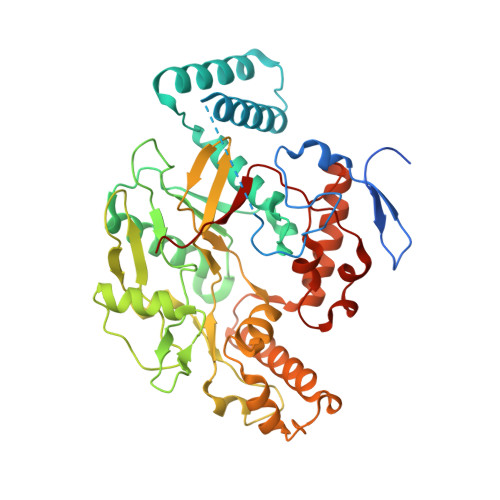Exploration of the Active Site of Neuronal Nitric Oxide Synthase by the Design and Synthesis of Pyrrolidinomethyl 2-Aminopyridine Derivatives.
Ji, H., Delker, S.L., Li, H., Martasek, P., Roman, L.J., Poulos, T.L., Silverman, R.B.(2010) J Med Chem 53: 7804-7824
- PubMed: 20958055
- DOI: https://doi.org/10.1021/jm100947x
- Primary Citation of Related Structures:
3NLD, 3NLE, 3NLF, 3NLG, 3NLH, 3NLI, 3NLJ, 3NLK, 3NLM, 3NLN, 3NLO, 3NLP, 3NLQ, 3NLR - PubMed Abstract:
Neuronal nitric oxide synthase (nNOS) represents an important therapeutic target for the prevention of brain injury and the treatment of various neurodegenerative disorders. A series of trans-substituted amino pyrrolidinomethyl 2-aminopyridine derivatives (8-34) was designed and synthesized. A structure-activity relationship analysis led to the discovery of low nanomolar nNOS inhibitors ((±)-32 and (±)-34) with more than 1000-fold selectivity for nNOS over eNOS. Four enantiomerically pure isomers of 3'-[2''-(3'''-fluorophenethylamino)ethoxy]pyrrolidin-4'-yl}methyl}-4-methylpyridin-2-amine (4) also were synthesized. It was found that (3'R,4'R)-4 can induce enzyme elasticity to generate a new "hot spot" for ligand binding. The inhibitor adopts a unique binding mode, the same as that observed for (3'R,4'R)-3'-[2''-(3'''-fluorophenethylamino)ethylamino]pyrrolidin-4'-yl}methyl}-4-methylpyridin-2-amine ((3'R,4'R)-3) (J. Am. Chem. Soc. 2010, 132 (15), 5437 - 5442). On the basis of structure-activity relationships of 8-34 and different binding conformations of the cis and trans isomers of 3 and 4, critical structural requirements of the NOS active site for ligand binding are revealed.
Organizational Affiliation:
Department of Chemistry, Center for Molecular Innovation and Drug Discovery, and Chemistry of Life Processes Institute, Northwestern University, 2145 Sheridan Road, Evanston, Illinois 60208-3113, United States.





















